Though this revival affected all the churches in the South African colony, this post focuses mostly on the revival as experienced by the Dutch Reformed Church.
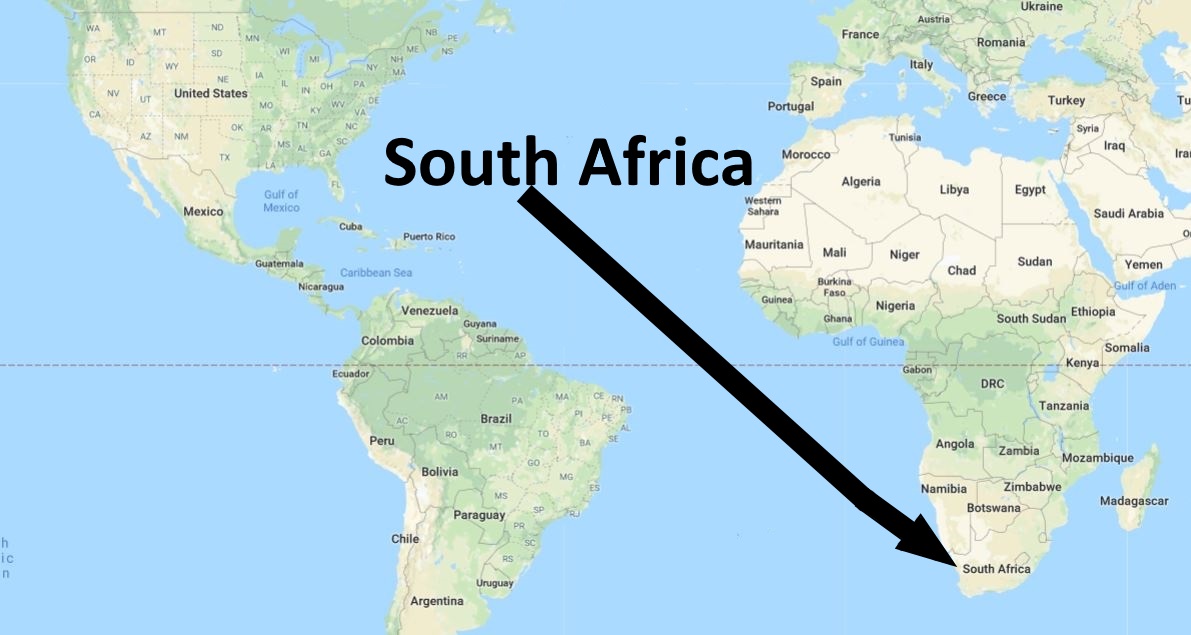
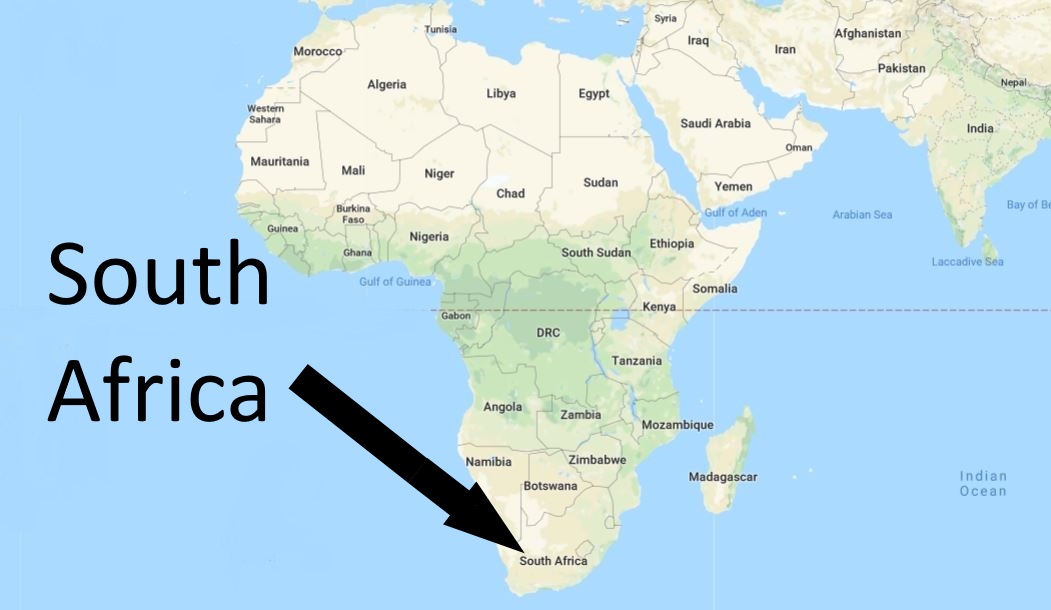 South Africa: Located on the southernmost end of the African continent.
South Africa: Located on the southernmost end of the African continent.
Brief Overview
Since the 1600s the area now known as South Africa was alternately under the control of the Dutch and English. Racism was rampant, even in the church. With the colonial authorities even exercising control over churches, the racial elitism went so far as to forbid the use of the English or Afrikaans languages in church services.
The colonial rulers passed laws forbidding the baptism of slaves or coloureds (those of mixed descent). These laws were in force to prevent the loss of slave labor, as converts were to have been released from slavery upon baptism and confirmation. This restricted the evangelization of anyone outside the white race.
Spiritual Condition of the Colony
There was a remnant that attempted to assemble believers for corporate prayer, beginning in 1847, but the prayer meetings were poorly attended, if at all. Most of the Christians were very content with their elevated status as being a “Christian,” and they were not open to allowing slaves and coloureds to join their ranks.
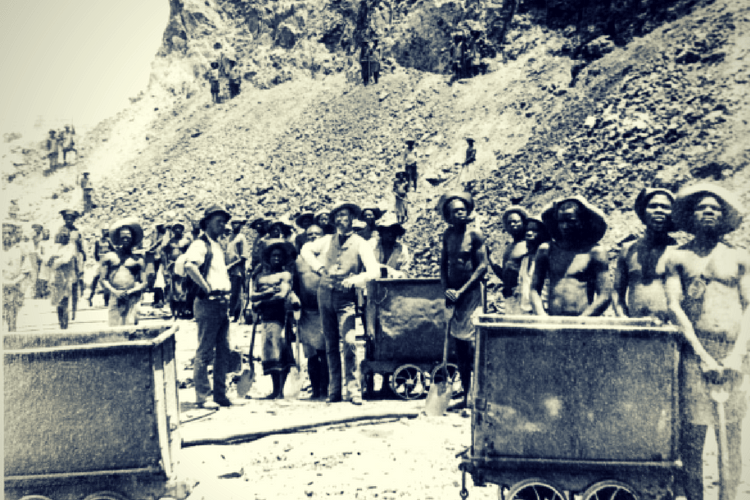
Laborers in diamond mines
What Happened
Reports from the 1857 Prayer Revival in America began to arrive at the Cape. The remnant had their hope of revival renewed. This renewed hope led several Dutch Reformed Church pastors to issue a new call to prayer in 1859. The call to prayer was printed in a newspaper on behalf of the South African Evangelical Alliance, and it read:
That a revival in our faith is necessary and earnestly desired is a fact that no one who is at all knowledgeable about the conditions of the churches in this Colony can deny. That such an awakening can occur through the abundant outpouring of the Holy Spirit, and that the gift of the Holy Spirit is promised in answer to prayer are truths that are clearly taught in Scripture.
In addition to the renewed call to prayer, pastors were
called upon to preach a series of sermons on consecutive Sundays on the character of God, the role of the Holy Spirit, and the need for both corporate and private prayer for the outpouring of the Spirit on the souls of Christians.
In addition to the above calls to prayer, an 85-page booklet describing the 1857 Prayer Revival in America was distributed to many congregations. The booklet emphasized the necessity of prayer both before and during a revival.
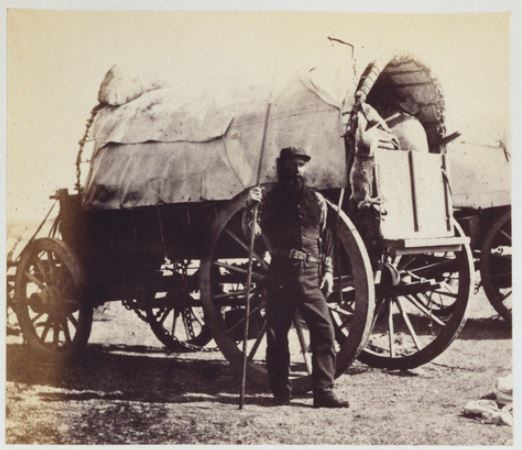
August 22, 1860: Man Guarding Food Supply Wagon in South Africa.
The Call to Prayer
In spite of the hopefulness of the remnant, the majority were still very skeptical of the potential for a revival, and prayer meetings were made up of only 3-4 people.
To address the lack of corporate prayer and the prevailing skepticism, a conference was set to take place in Worcester on April 18–19, 1860.
Even after the April conference, the call to prayer was still answered by very few, and it was then that God, “in His mercy, imparted the gift of prayer so that His requirements in this regard could be met.” For an example, it was in the town of Calvinia that an indescribable urge to pray came upon the community. This was very out-of-the-ordinary, because for many years this community was most reluctant to unite for prayer.
Worcester Conference for Revival
At the April 18-19 conference in Worcester, there were ministers from the Dutch Reformed Church, the Methodist Church, leaders from the Scotch Presbyterian Church, Wesleyan and Rhenish Mission Society (German). The conference was made up of 347 ministers, elders, deacons, and other church leaders. There were 20 churches represented, 16 of them being from the Dutch Reformed Church.
During the conference, firsthand reports of the revival in America were given, as well as how the revival had spread to the British Islands and other locations around the globe. There was also an address presenting a scriptural basis for revival.
The Revival Starts in Montagu
Following the Worcester Conference on April 18-19, 1860, delegates returned to their hometowns with a renewed desire to pray for revival. They immediately joined the already established prayer groups.
These prayer meetings met up to three times daily. People began sharing their faith, and many were saved.
An anonymous author gives this report of what took place during the times of prayer:
When he [the Lord] started to wander amongst us, how intense were the prayers for revival and the cries for mercy! ‘I am lost,’ cries one here. ‘Lord help me,’ cries another. It was impossible to calm them. Extraordinary scenes were witnessed in those
days. Anxious cries were uttered, heavy with fear. Heart-rendering testimonies of conversion were heard. Visions were seen and troubled dreams dreamt. Here in corporate prayer, elsewhere in quiet dwellings, even behind bushes and rocks, on mountains and in ravines, men, women, greyheads, children, gentlemen, servants –all kneeling on the same ground crying for mercy. And none of this expected by anyone, nor prepared by anyone, nor worked up or preached by anyone. It was all the Spirit of God; and not for a few hours or days, but months long. Oh! Blessed days! Come speedily to us again with your blessing! Come speedily again!
Worcester Revival Began on a Farm
The revival in the town of Worcester did not begin in the church. It began on a farm where people had been faithfully meeting in prayer each week for several months.
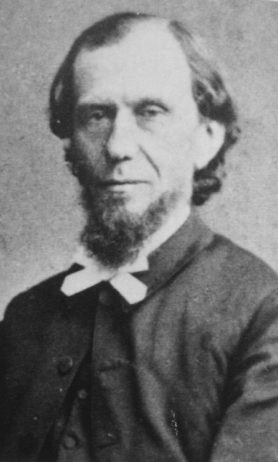
Andrew Murray: prolific writer
of over 200 books.
Andrew Murray, the pastor at the Dutch Reformed Church in Worcester, visited this farm. At this time he was very much opposed to emotions being expressed and was also opposed to services where the minister could not control what was taking place. Murray was undoubtedly shocked to find that the coloureds on the farm were the ones first to experience the revival, and they had probably not even been baptized.
The scene witnessed by Murray also had unexplainable manifestations. The Holy Spirit had so powerfully descended upon the farmhouse that people were crying out for mercy and falling to the ground merely by touching the doorknob. News of this revival at the farm spread and those from neighboring farms began attending the prayer meetings.
For three months the family farm was forced to stop their farming activities to help the influx of inquirers seeking salvation.
~~~~~~~~
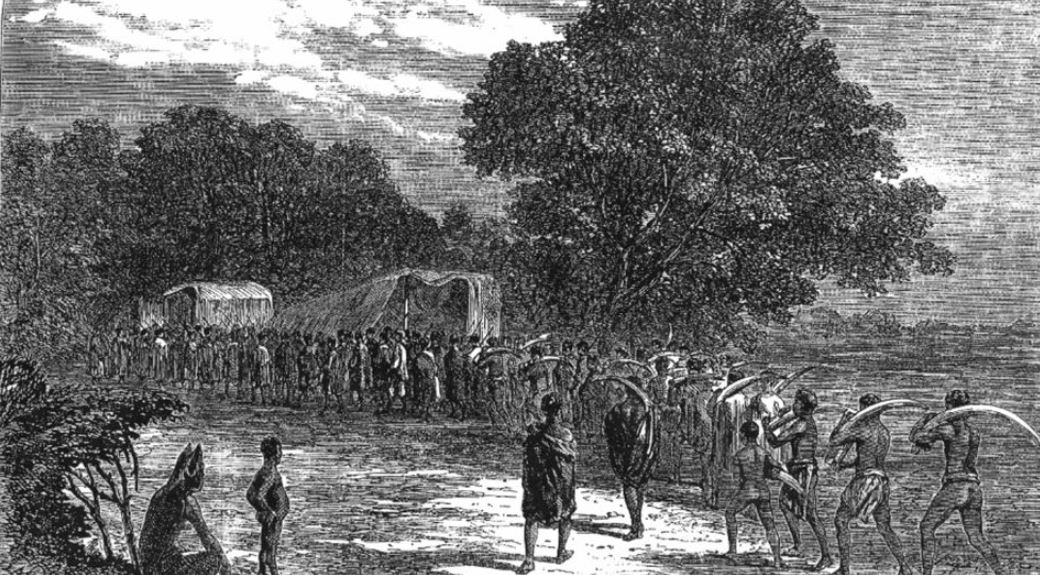
Elephant tusks being loaded onto wagons.
Worcester Revival Spreads from Farm to Town
Not long after Andrew Murray visited the revival at the farm, the revival’s influence began to appear among his congregational members. The following eye-witness account is what took place during a prayer meeting of the youth. The account was written by J.C. de Vries, who was the youth leader at the time:
On a certain Sunday evening there were gathered in a little hall some sixty young people. I was leader of the meeting, which commenced with a hymn and a lesson from God’s Word, after which I engaged in prayer.
After three or four others had (as was customary) given out a verse of a hymn and offered prayer, a Coloured girl of about fifteen years of age, in service of a farmer from Hex River, rose at the back of the hall and asked if she might propose a hymn. At first I hesitated, not knowing what the meeting would think, but better thoughts prevailed and I replied, Yes. She gave out her hymn-verse and prayed in moving tones. While she was praying, we heard as it were a sound in the distance, which came nearer and nearer, until the hall seemed to be shaken, and with one or two exceptions, the whole meeting began to pray – the majority in audible voice, but some in whispers. Nevertheless, the noise made by the concourse was deafening.
A feeling which I cannot describe took possession of me. Even now, forty-three years after these occurrences, the events of that never-to-be-forgotten night pass before my mind’s eye like a soul-stirring panorama. I feel again as I then felt, and cannot refrain from pushing my chair backwards and thanking the Lord fervently for his mighty deeds.
At that time Rev. A. Murray was minister of Worcester. He had preached that evening in the English language. When the service was over, an elder [Mr Jan Rabie] passed the door of the hall, heard the noise, peeped in, and then hastened to call Mr. Murray, returning presently with him. Mr. Murray came forward to the table where I knelt praying, touched me, and made me understand that he wanted me to rise. He then asked me what had happened. I related everything to him. He then walked down the hall for some distance and called out, as loudly as he could, People, silence! But the praying continued.
In the meantime I too kneeled down again. It seemed to me that if the Lord was coming to bless us, I should not be upon my feet but on my knees. Mr. Murray then called again aloud, People, I am your minister sent from God, silence! But there was no stopping the noise. No one heard him, but all continued praying and calling on God for mercy and pardon. Mr. Murray then returned to me, and told me to start the hymn-verse commencing ‘Help de ziel die raadloos schreit’ (Aid the soul that helpless cries). I did so, but the emotions were not quieted, and the meeting went on praying. Mr. Murray then prepared to depart, saying, ‘God is a God of order, and here everything is confusion.’ With that, he left the hall.
J.C. de Vries has also documented the following report of what happened after that Sunday night:
After that [the outbreak of revival amongst the young people] the prayer meetings were held every evening. At the commencement there was generally great silence, but after the second or third prayer the whole hall was moved as before, and everyone fell to praying. Sometimes the gathering continued to three in the morning. And even then, many wished to remain longer, or returning homewards, went singing through the streets.
The little hall was soon quite too small, and we were compelled to move to the school building, which also was presently full to overflowing, as scores and hundreds of country-folk streamed into the village.
On the first Saturday evening in the larger meeting-house, Mr. Murray was the leader. He read a portion of Scripture, made a few observations on it, engaged in prayer, and then gave others the opportunity to pray. During the prayer which followed on his, I heard again the sound in the distance. It drew nearer and nearer, and suddenly the whole gathering was praying.
That evening a stranger had been standing at the door from the commencement, watching the proceedings. Mr. Murray descended from the platform, and moved up and down among the people, trying to quieten them. The stranger then tiptoed forwards from his position at the door, touched Mr. Murray gently, and said in English: ‘I think you are the minister of this congregation. Be careful what you do, for it is the Spirit of God that is at work here. I have just come from America, and this is precisely what I witnessed there.
It was from this point on that Andrew Murray embraced emotion-laced prayers, and even involuntary prostrations. Other Dutch Reformed ministers tried to get him to stop the manifestations, but he responded with a quote from George Whitefield:
If you try to stamp out the wildfire and remove what is false, you will equally and simultaneously remove what is real.
 Dutch Reformed Church in Worcester, South Africa
Dutch Reformed Church in Worcester, South Africa
Two Waves of Revival
It was from May to December of 1860 that the first wave of this revival hit the Cape of Africa. The reports of the revival created deep hunger in areas that had not yet been affected by it, and they did not want God to pass them by.
The Evangelical Alliance called for a week of prayer, for January 5-13, 1861, and God responded by sending a second wave of revival, spreading throughout the Cape Colony.
Infectious Nature of Revivals
People from other towns would visit the revival that was being experienced in Montagu and other locations, and upon returning to their hometowns, they would find that they became carriers of the “revival spirit”, and the revival would be replicated in their town.
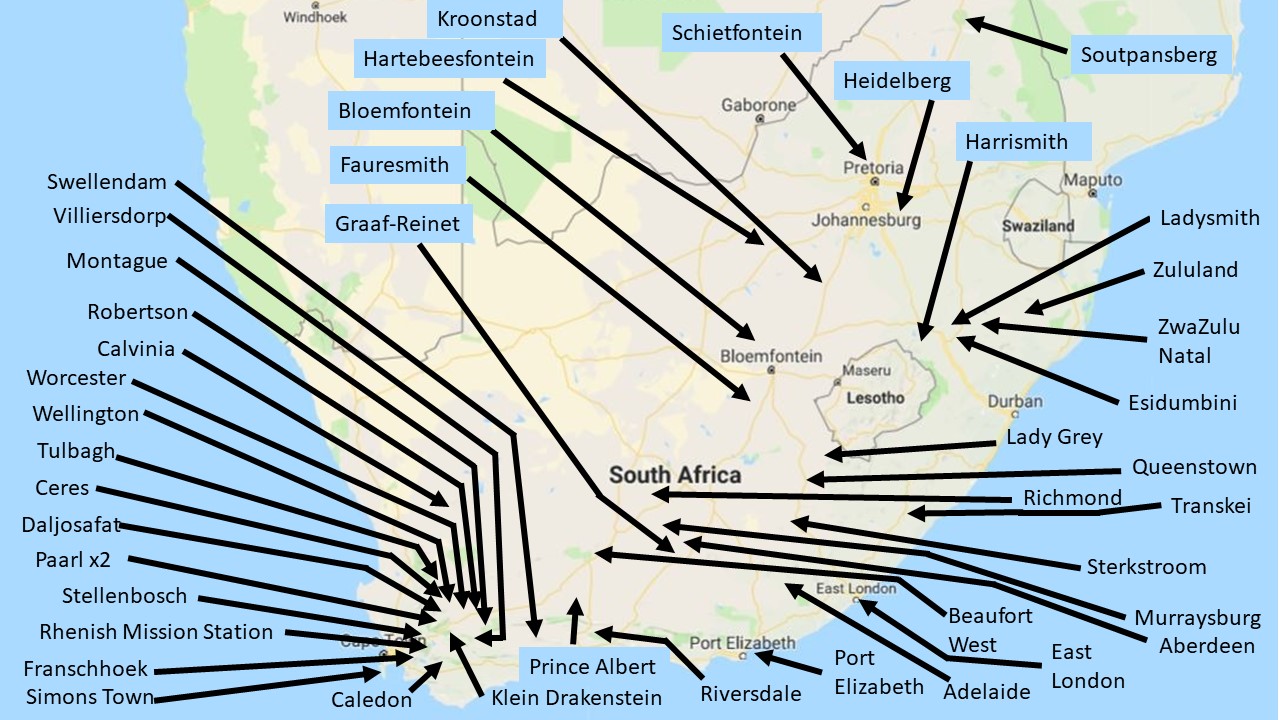
South Africa: This map reflects locations where Dutch Reformed Churches reported revivals having taken place.
Results of the Revival
►The presence of God placed a huge burden upon people to pray.
►Prayer meetings became a regular part of church life, whereas before the revival they were practically non-existent.
►People began to share their faith.
►People were daily being saved.
►Church attendance grew dramatically.
►Remarkable unity among believers was displayed.
►Many families experienced reconciliation.
►Businesses stopped their unlawful practices.
►Working conditions changed for the better.
►Juvenile crime and sexual immorality stopped.
►Slowly the prisons emptied.
►Restitution and payments were made for old debts.
►Missions giving multiplied.
►Renewed emphasis on missions emerged, whereas before the revival there was an “anti-missions stronghold” that gripped the region.
►Not less than 50 young men were called into the ministry (Dutch Reformed Church).
►The Women’s Missionary Union was established.
►Not less than 30 young men started training as missionaries.
►A Missions Training Institute was started.
►Seminaries began to pop up in different locations around the Cape.
►Due to the revival’s influence, the Dutch Reformed Church alone started 12 new mission stations in various nations on the African continent. By 1900 they had 304 missionaries and 72,079 converts.
►The Dutch Reformed Church started 1,147 schools with 2,699 teachers and 96,309 students.
►An orthodox-oriented newspaper was started, which was greatly used by God to counter the liberal-oriented newspapers that were attempting to undermine the work of God.
►The effects of the revival continued for well over 50 years.
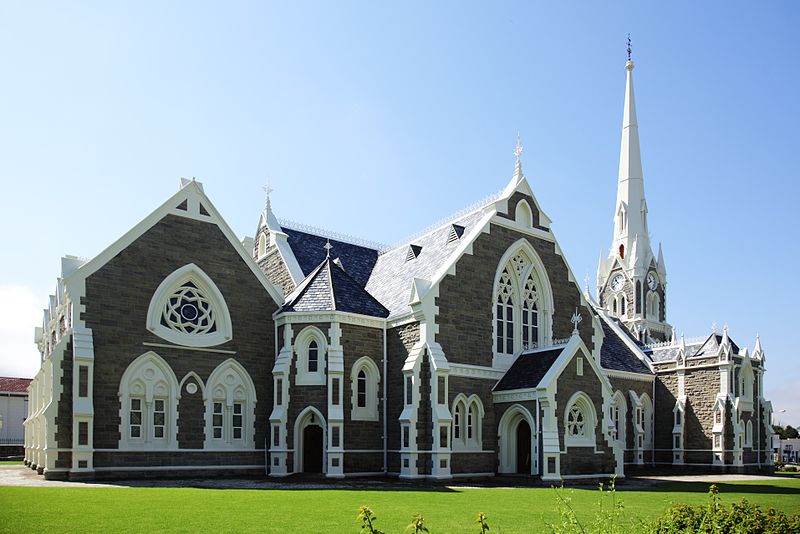
Dutch Reformed Church in Graaf Reinet, South Africa.
This church was pastored by Andrew Murray Sr. beginning in 1822. He had set aside every Friday night to pray for revival (38 years). The joy he experienced when his son, Andrew Murray Jr., welcomed revival at Worcester, and even spread to Graaf Reinet, is reflected in the following letter, written by his daughter to one of her sisters:
I can imagine Papa’s joy. I think he must be saying with Simeon: ‘Lord, now lettest Thou Thy servant depart in peace, for mine eyes have seen Thy salvation.’ When this letter was read to him, the tears welled up into his eyes as he said: “It is just that.”
Revival of 1874
A second revival took place in Montagu in 1874 which was even more powerful than the one in 1860. The difference between the two was that the 1860 revival was one that involved deep conviction of sin on the part of the Christians, and the 1874 revival was noted for its joyful praise and worship.
This revival of 1874 also spread to many other towns across the Cape of Africa. One example was in the town of Soutpansberg, where a revival broke out in 1875 among the children on the mission station. The Holy Spirit came with such power among them that they did not eat or sleep for three nights. This revival soon spread to adults and African tribes located in the area. The report was that old people, witchdoctors, and even murderers wailed like children. The scenes were reported as having been “indescribable”.
~~~~~~~~
The above information was obtained primarily through documents from the Dutch Reformed Churches that experienced the revival. It is understood that congregations from many other denominations were also affected by the revival.
Sources
South Africa’s Forgotten Revival: The Story of the Cape’s Great Awakening in 1860 by Olea Nel
Lessons to be Learned from the South African Revival by Allen Baker
The 1857-1862 Revival: When God Comes in Power by Bennie Mostert
Andrew Murray and the 1860 Revival by Peter Hammond
Return to List of Revival Stories
Chet & Phyllis Swearingen:
Office: (260) 920-8248
romans1015@outlook.com
Beautiful Feet
P.O. Box 915
Auburn, IN 46706

